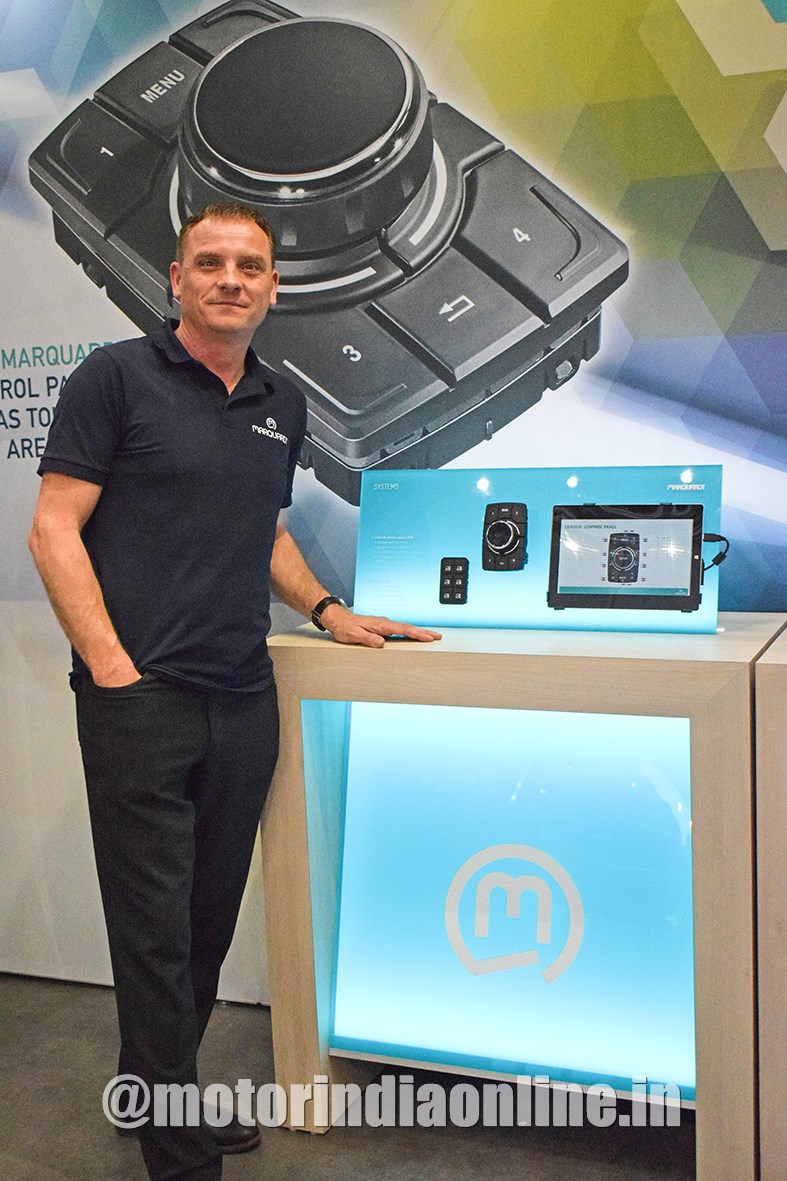Mechatronics expert Marquardt showcased its expertise for the construction equipment industry at the show. Speaking exclusively to MOTORINDIA, Mr. Thomas Hengstler, Global Key Account Manager, Sales Off-Road, at Marquardt said: “We want to communicate to the visitors that Marquardt is a serious long-term supplier to the construction equipment industry in the same manner as we do for other industries such as the automotive and agricultural machinery. The off-road and construction machinery market is definitely a strategic one for Marquardt based on the experience we have in the automotive market and power tools. We are conveying our expertise to provide rugged and sturdy materials similar to our power tool business. We know how to deliver solid materials, water proof materials and that’s the synergy that we combine to attract customers in the off-road market as well.”

The company showcased new control units and keypads robust enough to withstand any endurance test. These components are highly-sought after by manufacturers in a wide-range of industries, as they can be easily integrated into construction and agricultural machinery, commercial and leisure vehicles, electric vehicles, and boats. Promoting ‘One platform under two operating concepts’, Marquardt had an attractive standard solution 3584 off-road keypad. The CAN-based 2×3 button interface withstands harsh conditions, thanks to extreme dust and water protection. Its resistance to heat and cold makes it suitable for every climate, from the Arctic to the desert. The non-slip keyboard grip offers additional security. It also features up to three possible function displays per key. The customer can define the key in question, and the symbol will be adapted accordingly.
“We have realized over the past few years, that the machine operators expect the same quality and ways of operation as they find in their cars, especially for the switches. The tactile modules that are getting appreciated in the CV space are being accepted even in tractors. We also want to leverage upon the opportunity that the OEMs of these machineries offer in terms of outsourcing their R&D. We work with them closely to offer customized solutions both in design and scope of functionality,” added Mr. Hengstler.
Marquardt has also developed a remote-control system that is operable outside the driver’s cabin. The new 3559 series from the mechatronics specialist, uses Bluetooth Low Energy technology with CAN gateway and can be installed in all commercial and leisure vehicles. This allows control of any vehicle or machine function that is connected to the CAN bus. Manufacturers are not limited to current or future models, as the product is available as standard equipment but can also be integrated into existing systems. Therefore, older equipment and fleets can be retrofitted at any time.
“Mostly these operational control units will find acceptance into the excavators, wheel loaders and backhoe loaders. The main drivers in the construction segment are comfort to the operator, ease of operation and cost reduction and we are committed to offer our customer value for money in all these aspects,” he stated.
Cockpit of Tomorrow
What will the interior of a premium automobile look like in the future? How will the user interface change? And which new functions can be integrated? Marquardt allowed visitors travel into the future to experience its innovative products in a hands-on environment with its DemoCar. At the Munich trade show, the DemoCar revealed what is possible. Marquardt is approaching the trend towards digital cars and autonomous driving with integrated solutions that are not only modern and comfortable, but increasingly intelligent and safe, as well. New generation HMI controls play a central role in the cockpit of the future. Touch screens, for example, are equipped with sensor aids. The test user can lock the door, adjust the seating position, or open the windows using the “seat & door control panel” on the inside of the driver’s door. The panel senses touch and signals with a pulse when the finger is in the correct position. Once gentle pressure is applied, the desired function is activated. These responsive technologies don’t imitate the passive haptics of mechanical switches, but rather, send a response to the user. That makes the DemoCar an exciting development, not only for the automotive industry, but for other business sectors, as well.